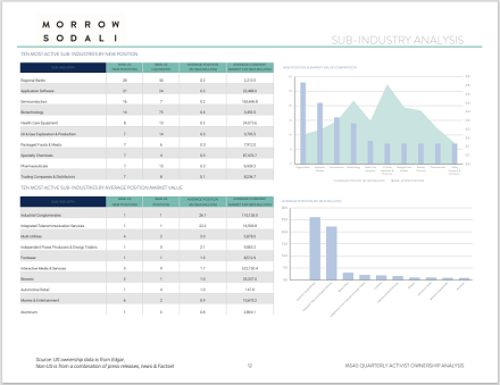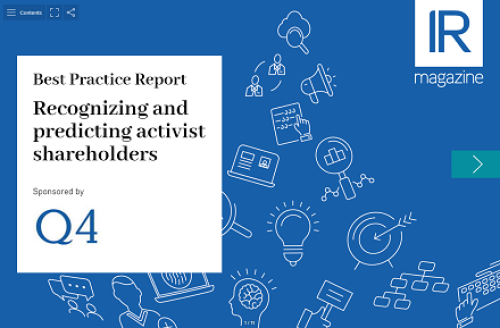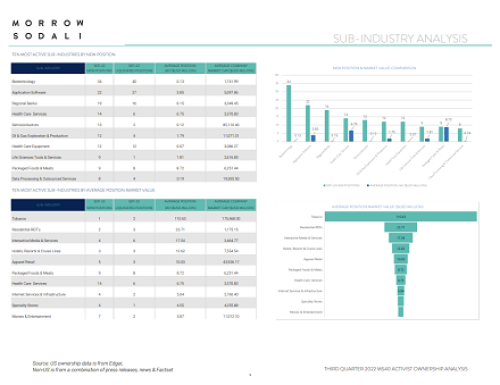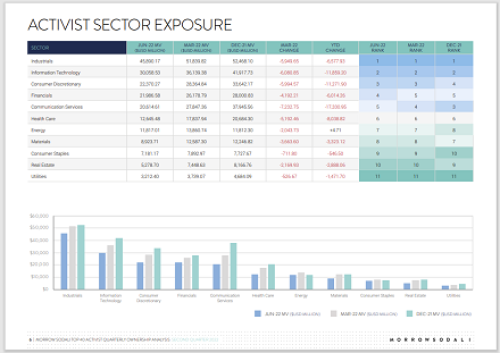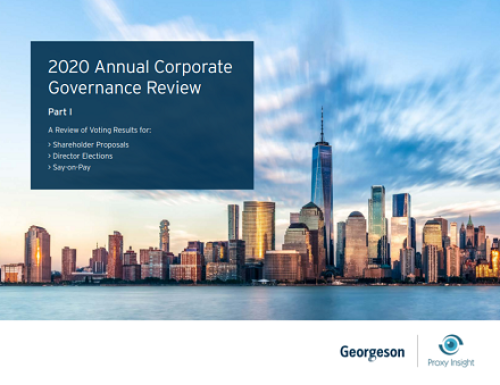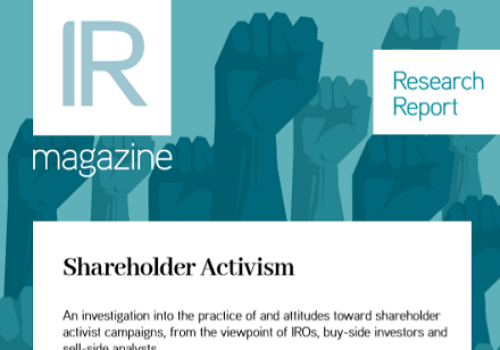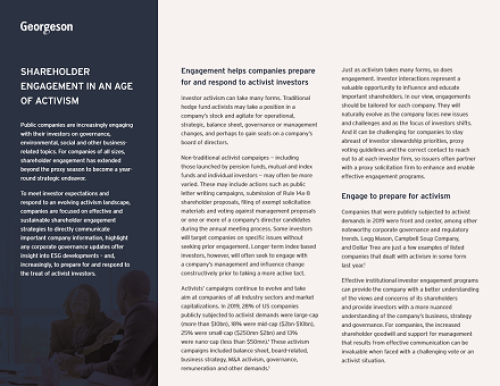When stocks take the kind of nosedive they did in December 2018, market prognosticators tend to pronounce slowdowns in all types of activity from M&A to IPOs and debt financing. Shareholder activism often gets tossed into this mix. While the volatile markets certainly impacted the 2018 year-end results for a number of activists, from our vantage point we see the record shareholder activist activity that occurred in 2018 continuing into this year not despite of but – in many cases – because of the market turbulence.
Remember that, at their core, activists are deep-value investors: they search for undervalued companies that can benefit from new strategies, new management and/or fresh board oversight. When stocks are all moving up in tandem, it’s much harder to find relative underperformers and more expensive to build sizable positions. During times when investors are fearful, though not in a full-blown panic, underperformers become more visible.
We expect a busy 2019. To be sure, last year’s activity could be tough to top. According to Activist Insight, a record 284 companies above $500 mn in market cap were targets of activists in 2018, up roughly 15 percent from 2017. In terms of board seats secured, activists and other investors landed 194 spots last year, a 42 percent increase on the year before, according to Activist Insight data.
Of note, approximately two thirds of all the board seats garnered by activists came from settlements with companies as opposed to shareholder votes in 2018. Companies are increasingly willing to avoid going all the way to a vote because they have embraced the idea that refreshing the boardroom is vitally important for long-term performance, and suggestions from shareholders should be taken seriously. Companies also know (or should know!) that very large institutional investors are much more willing to embrace change coming from outsiders.
A rise in settlement activity further indicates that investors of all types, from activists to index funds, have increasingly louder voices in how US corporations are run and governed. This year, as traditional investment managers become more engaged with the companies they own, activist investors will have more opportunities to enact change.
Navigating a complex landscape
Through our work over the last year, we have had a first-hand view of which issues concern different institutional investors and how and when they decide to indicate their support for activists. That provides us with insight into how complex the landscape has become as shareholders adjust their priorities with regard to ESG and other issues. Predicting how a large investor might vote based on prior votes is becoming more difficult and activists and companies need to conduct a careful analysis of the shareholder landscape in order to effectively map out a strategy.
Even retail shareholders are getting more involved, although retail participation can be negatively impacted by the currently cumbersome proxy voting process. As activists continue to gain legitimacy in the markets and design more effective ways to reach shareholders with their message, retail participation in the voting process should further increase. In many cases, company employees and former employees make up a large portion of retail shareholders and these owners can be highly engaged in the voting process.
The rise of ESG
Another significant development is that environmental and social issues are increasingly on the radar of both activists and large institutional investors. Especially in cases where business risk to value can be part of the concern, environmental and social issues are now some of the most important factors index fund managers and other long-term shareholders use to evaluate the performance of a company. In their overall diligence, activist investors note where a company is deficient in these areas and whether that issue can draw shareholder support in a campaign.
If an activist views a company’s policy, lack of policy or attention to a sustainability issue, a cyber-security matter, lack of board or management diversity, or another ESG issue, then those matters can be a prominent part of the dialogue. Companies with strong shareholder communications and robust ESG policies will be better able to fend off an activist if they find one knocking on their door.
With all of these factors present and more capital coming in to activist strategies, the chances are good that this year could surpass 2018 in terms of activity. We’ll likely see more activity in the energy, technology, retail and restaurant sectors, although any underperformer is vulnerable, irrespective of the market cap of the target. Third Point’s campaign at Campbell Soup (after campaigns by others at Taubman Centers and Forest City Realty Trust) also opened the door to activism at companies where family control may be hurting long-term performance.
While small and mid-cap companies will be targeted, so will large, well-known brand-name companies where activists can make their mark by communicating publicly what changes they want to see. We wouldn’t be completely surprised to see one of the Faang (Facebook, Amazon, Apple, Netflix and Google) stocks come under public pressure from activists or other shareholders. This year could be one of the most interesting yet.
Bruce Goldfarb is president and CEO of Okapi Partners


